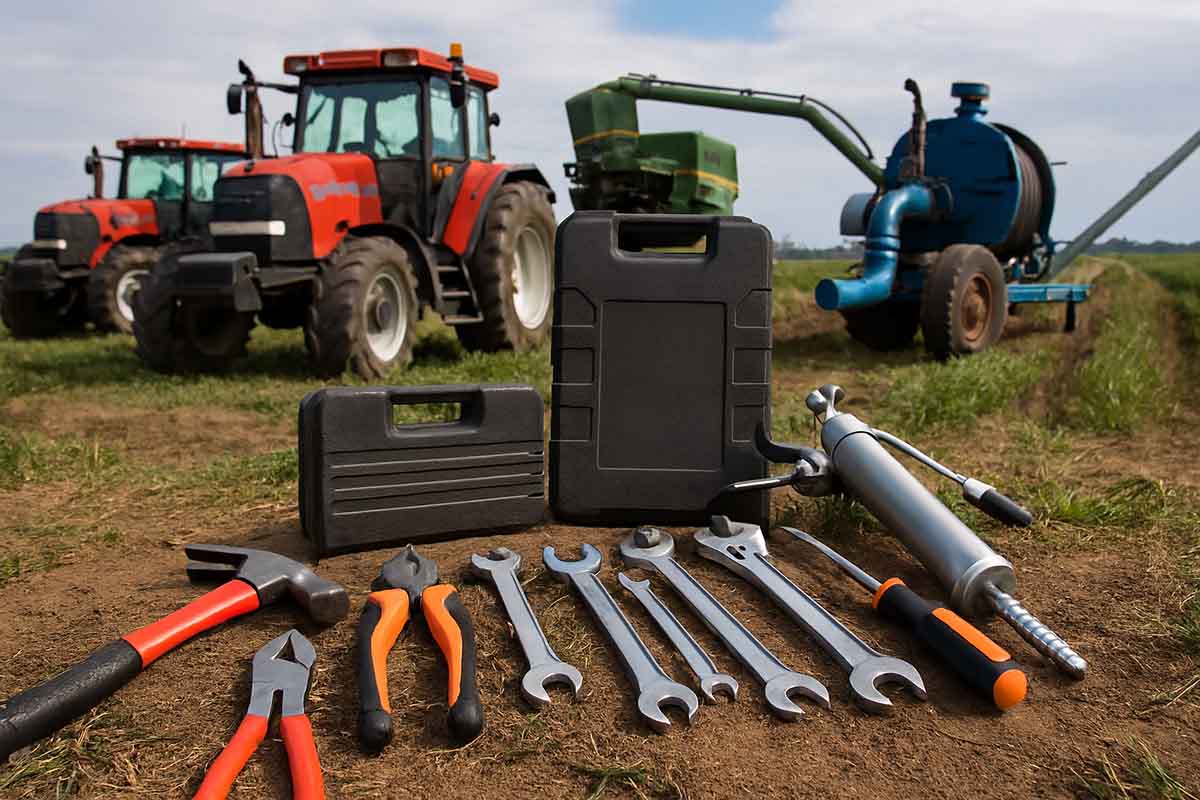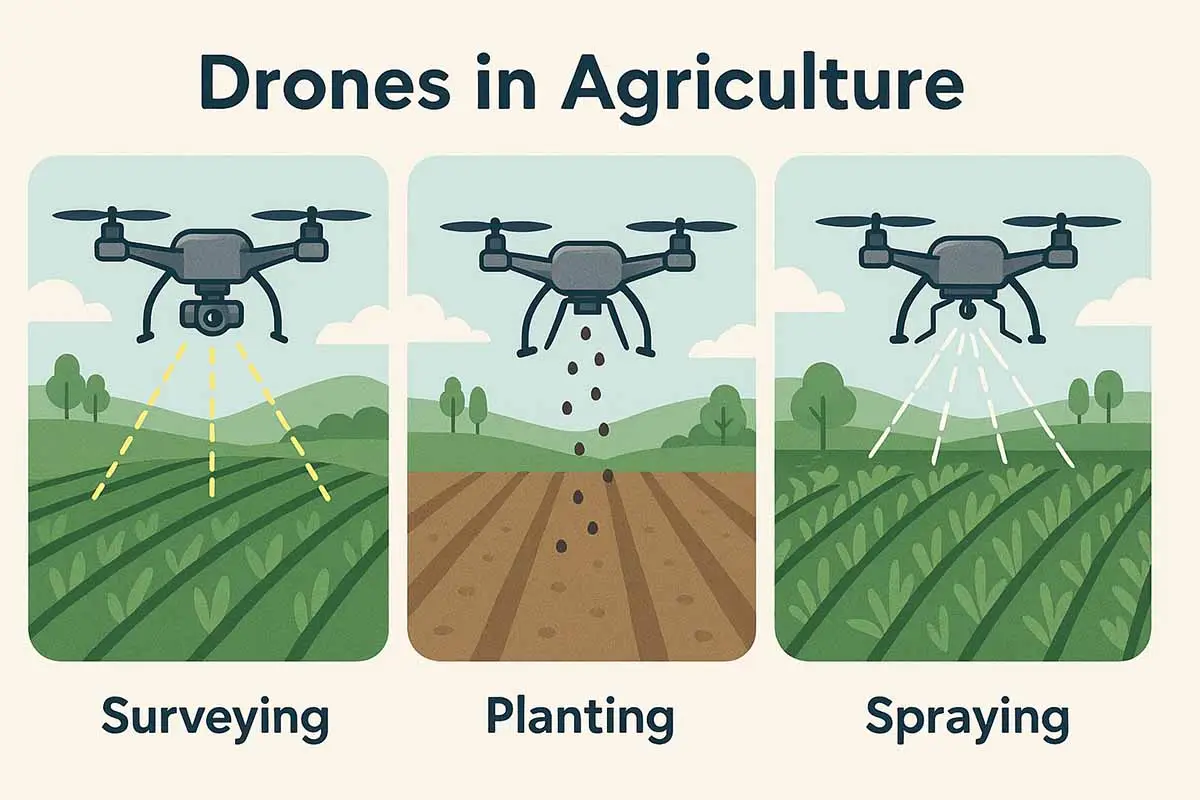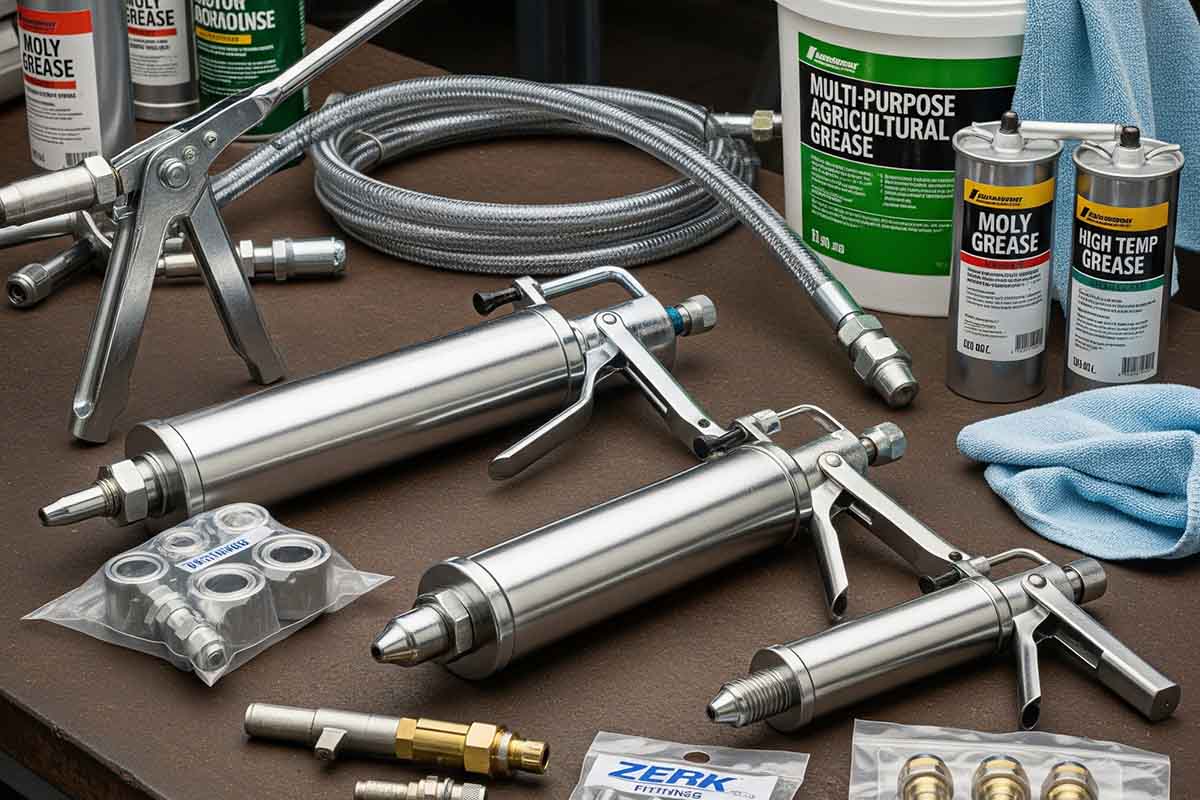Introduction – The GPS Revolution in Farming
In the not-so-distant past, farmers relied on visual markers, manual adjustments, and a bit of guesswork to get seeds in the ground and crops out of the field. Today, precision farming tools have replaced uncertainty with pinpoint accuracy — thanks to GPS-guided equipment. From perfectly straight planting rows to optimized harvesting patterns, these systems are redefining agricultural efficiency.
But GPS guidance isn’t just a “tech upgrade” — it’s a complete operational shift. It impacts everything from fuel savings and reduced input waste to consistent crop yields and data-driven farm management.
What Is GPS-Guided Farming Equipment?
GPS-guided farming equipment uses satellite positioning systems to steer tractors, seeders, harvesters, and sprayers with extreme accuracy — often within 2.5 cm (1 inch) of deviation. This means your machinery knows exactly where it has been, where it is, and where it needs to go next.
Common GPS-based systems include:
- Auto-steer tractors – Keep planting or harvesting lines perfectly straight.
- Variable rate applicators – Adjust seed, fertilizer, or pesticide application based on soil or crop data.
- Yield mapping harvesters – Record and analyze crop output in real time.
Benefits of GPS-Guided Precision Tools
1. Perfect Planting Accuracy
When seeds are placed exactly where they need to be, plant competition is reduced, and yields improve. Uniform spacing means healthier crops and less waste.
2. Reduced Input Costs
By avoiding overlaps or missed spots, GPS systems cut down on excess fertilizer, seeds, and fuel — directly improving profitability.
3. Time Savings
Fewer passes across the field mean faster operations and more time to focus on other farm tasks.
4. Improved Harvest Efficiency
GPS guidance ensures machinery works only where needed, minimizing crop loss and maximizing grain quality.
Applications in Planting
GPS-guided planters and seed drills allow farmers to:
- Maintain row-to-row precision even in irregular-shaped fields.
- Automatically shut off seeding in already-planted areas.
- Integrate soil data to plant different crop varieties in different zones.
This technology not only increases yields but also supports sustainable farming practices by reducing unnecessary soil disturbance.
Applications in Harvesting
When it comes time to reap what you sow:
- Auto-guided combines minimize missed crops and reduce fuel use.
- Yield monitors provide real-time harvest data, helping farmers plan next season.
- Controlled traffic farming (CTF) reduces soil compaction by keeping machinery on predetermined paths.
Challenges and Considerations
While GPS-guided systems deliver impressive results, farmers must consider:
- Initial investment costs – Advanced systems can be expensive, though ROI is often rapid.
- Training requirements – Operators need proper guidance to fully utilize the tech.
- Signal limitations – Rural areas with weak GPS coverage may need base station support.
The Future of GPS-Guided Agriculture
As technology advances, expect to see:
- Full-field automation with self-driving tractors.
- Integration with AI and drones for real-time monitoring.
- Cloud-based farm management platforms that connect equipment, weather data, and market prices.
The shift toward data-driven, GPS-powered farming isn’t slowing down — and those who adopt early will reap the benefits in both productivity and profitability.
Funny Fact
Some farmers joke that GPS guidance is like “farming with a video game controller” — except the rewards aren’t coins or points, but higher yields and a bigger paycheck.
Lesser-Known Fact
GPS-guided farming originated from military navigation technology, but when civilian access became available in the 1990s, agriculture quickly became one of its biggest adopters.
Conclusion – Farming on the Fast Track to Precision
GPS-guided planting and harvesting tools are not just making farming easier — they’re making it smarter, more sustainable, and more profitable. By combining satellite accuracy with advanced machinery, farmers can boost productivity while preserving resources for the future.
Further Read
- Industrial Tools in Agriculture – Powering Farming
- Overview of industrial tools for planting and harvesting
- Small vs Large-Scale Farm Tools: Real-World Case Studies
- Role of Mechanization in Sustainable Agriculture
- Top Agricultural Tool Brands You Should Know
- Emerging trends: automation, AI, and robotics in farming
- Top Industrial Tools Transforming Modern Agriculture
- Essential Maintenance Practices and Tools for Agricultural Machinery: Your Complete Guide
- IoT-Enabled Agricultural Tools
- Drones in agriculture: surveying, planting, and spraying
- Precision farming tools: GPS-guided equipment for planting and harvesting
- Data-driven decision-making in agriculture
- Top 10 Maintenance Tools for Tractors, Harvesters & Irrigation Systems
- Seasonal Maintenance Checklists & Toolkits for Farmers
- Hydraulic System Maintenance Tools for Heavy Farm Equipment
- Lubrication Tools and Best Practices for Agricultural Machinery
- Industrial Torque Wrenches: Key to Farm Equipment Safety
💬 What’s your experience with GPS-guided farming equipment? Share your thoughts in the comments below — your insights could help other farmers make the leap into precision agriculture. And if you found this article useful, share it with your network of fellow growers.





